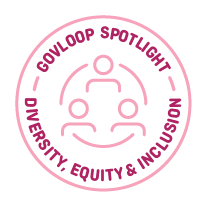What is Inclusive Leadership?
So you want to be more inclusive at work; but like most leaders, you don’t know where to start.

As more discussions about diversity, equity and inclusion (DE&I) gain traction and visibility in the workplace, here are some questions that many leaders ask themselves:
- What exactly is inclusive leadership?
- What actions are involved?
- How will aspects of my leadership style change, or develop, and will it make me a better leader?
In “How to Be An Inclusive Leader,” Jennifer Brown describes an inclusive leader as someone who shifts their thinking, feelings and actions to be more intentional about creating cultures of belonging in the workplace. She notes that inclusive leaders start by building self-awareness of their conscious and unconscious biases, privileges, cultural beliefs, and attitudes about people who are different from them.
Leaders who are intentional about inclusion don’t stop at self-awareness. They move toward active behavior changes to improve the experiences of underrepresented groups at work. These leaders amplify the voices and promote the visibility of those who are otherwise silenced or overlooked. Through the actions of the inclusive leader, employees who don’t feel supported, heard or visible can gain effective support.
Once leaders are confident in their abilities to identify their own biases and privilege, they can spot situations of bias and discrimination occurring in real time. They’ll also be more likely to say something and do something about it. They will also be more prepared to advocate for others at work.
Why Inclusion Matters?
Industry research shows that diverse organizations are stronger, creative and more successful. However, a more diverse workforce is not enough.
Employees need to experience a sense of belonging at work for organizations to truly reap the rewards of their DE& I efforts. A research study, “Improving Workplace Culture through Evidence-Based Diversity, Equity, and Inclusion Practices” by the Wharton School of the University of Pennsylvania, explored the relationships between DE&I practices and the workplace experiences of working adults across different industries in the U.S.
Outcomes from this study revealed three overarching factors. What helps employees feel a sense of belonging are managerial involvement, workplace policies, and mentoring and sponsorship. Ultimately, when employees feel included at work they perform better, stay longer and support the team’s mission. Leaders can do their part by being more engaged. They can also work to create environments where all employees can contribute and support the mission.
6 Steps to Inclusive Leadership, Now!
Anyone can practice inclusive leadership. If you’re not quite sure where to start these six steps are clear and simple. Here is how you can make a positive impact on workplace culture:
1. Increase self-awareness through books, surveys and self-assessments like the Implicit Association Test (IAT).
2. Develop the six competencies of inclusive leadership: commitment, courage, curiosity, cognizance of bias, cultural intelligence and collaboration.
3. Highlight the accomplishments of all team members.
4. Become knowledgeable about workplace programs that benefit employees such as flexible work and leave arrangements, or celebrating cultural holidays.
5. Create buddy systems to encourage peer mentoring, comradery, and relationship building.
6. Make training resources on topics such as inclusive language and unconscious bias trainings available to all employees.
Develop an Action Plan to Be More Inclusive
Being more inclusive in your leadership practices takes intentionality, boldness and consistency. To develop an action plan to be more inclusive:
- Start by creating a goal.
- Then write down three inclusive leadership competencies you want to grow and develop.
- Next, identify specific tasks or action steps you want to practice each day.
- List resources you will need to accomplish your goal.
- Lastly, create a timeline for when you will start, end, and reevaluate your progress.
Inclusive leadership is a worthy goal for creating safe spaces where every employee can thrive. Remember, this process takes time and won’t happen overnight. But with the right attitude, tools and resources anyone can do it!
Kima Tozay is a Licensed Clinical Social Worker and subject matter expert on Counseling and Advocacy programs in her role at Navy Fleet & Family Support Center, Everett, Washington. Her government career spans 15 years, starting in the Navy. Kima completed her Masters in Social Work degree from the University of Washington and has held positions with the Veterans Affairs Department (VA) and the Army. Kima’s greatest career accomplishment is receiving the Federal Employee of the Quarter Award for her leadership during the COVID-19 pandemic. She earned an Executive Leadership Certificate from Graduate School, USA. You can connect with Kima on LinkedIn.
Interested in becoming a Featured Contributor? Email topics you’re interested in covering for GovLoop to [email protected]. And to read more from our summer/fall 2021 Cohort, here is a full list of every Featured Contributor during this cohort and a link to their stories.
Photo by Xavi Cabrera on Unsplash






Leave a Reply
You must be logged in to post a comment.